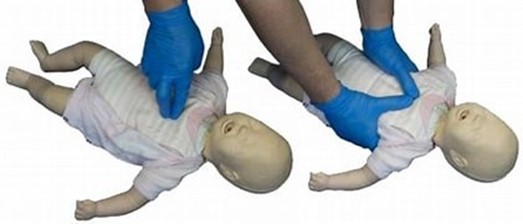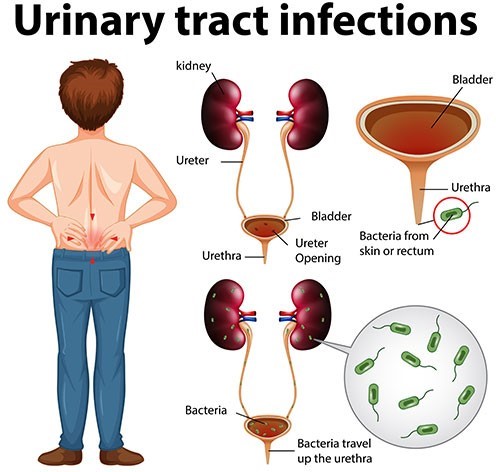A nurse is preparing to begin chest compressions on an infant.
The nurse should perform compressions using which of the following techniques?
Deliver compressions just above the nipple line.
Deliver compressions with the heel of one hand.
Deliver compressions at a depth of 5 cm (2 in).
Deliver compressions at 1/3 the depth of the chest.
The Correct Answer is D
This is the recommended technique for chest compressions on an infant, as it provides adequate blood flow without causing injury12.
Choice A.
Deliver compressions just above the nipple line is incorrect, as this is not the correct location for chest compressions on an infant.
The correct location is below the nipple line, at the center of the chest.
Choice B.
Deliver compressions with the heel of one hand is incorrect, as this is the technique for chest compressions on a child, not an infant. For an infant, two fingers are used instead of one hand13.
Choice C.
Deliver compressions at a depth of 5 cm (2 in) is incorrect, as this is too deep for an infant’s chest.
The correct depth for an infant is about 4 cm (1.5 in) or 1/3 the depth of the
chest12.
Therefore, choice D is the best answer.

Nursing Test Bank
Naxlex Comprehensive Predictor Exams
Related Questions
Correct Answer is D
Explanation
Contact the provider to clarify the dosage and frequency of medication administration.
The nurse should always verify the dosage and frequency of medication administration with the provider before administering any medication to ensure the safety and well-being of the infant.
Choice A is not an answer because the nurse should verify the dosage and frequency with the provider before administering any medication.
Choice B is not an answer because the nurse should verify the dosage and frequency with the provider before administering any medication.
Choice C is not an answer because waiting and monitoring the infant’s symptoms does not address the need to verify the dosage and frequency of medication administration with the provider.
Correct Answer is ["A","B","C","D","E"]
Explanation
The nurse should include all of these points in the teaching.
A. Avoiding bubble baths can help prevent irritation and infection.
B. Watching for manifestations of infection can help detect any worsening or recurrence of the infection.
C. Emptying the bladder completely with each void can help prevent urine from remaining in the bladder and causing infection.
D. Wiping the perineal area front to back can help prevent bacteria from
spreading to the urethra.
E. Wearing cotton underpants can help keep the area dry and reduce the risk of infection.

Whether you are a student looking to ace your exams or a practicing nurse seeking to enhance your expertise , our nursing education contents will empower you with the confidence and competence to make a difference in the lives of patients and become a respected leader in the healthcare field.
Visit Naxlex, invest in your future and unlock endless possibilities with our unparalleled nursing education contents today
Report Wrong Answer on the Current Question
Do you disagree with the answer? If yes, what is your expected answer? Explain.
Kindly be descriptive with the issue you are facing.
